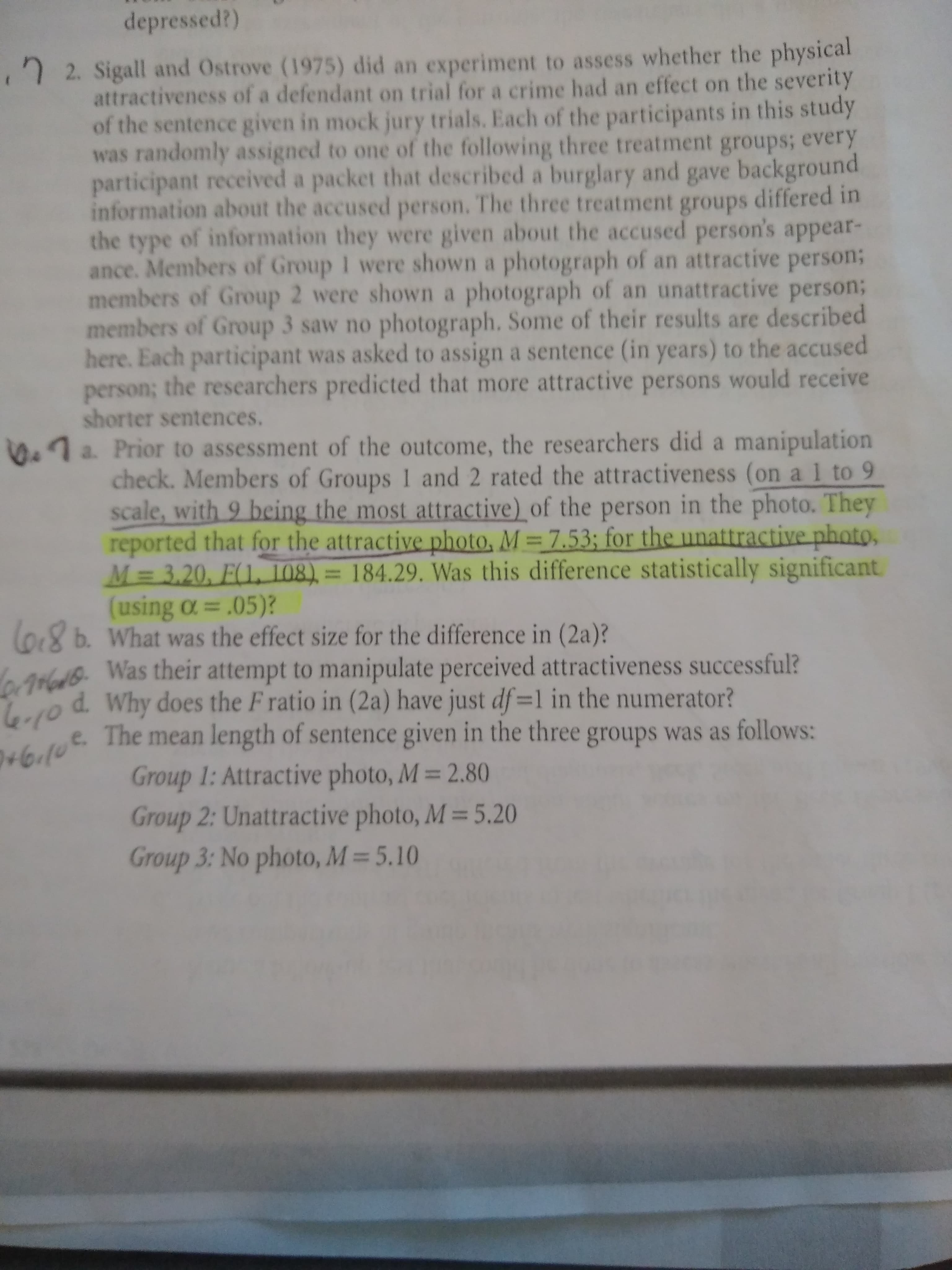depressed?) 7 2. Sigall and Ostrove (1975) did an experiment to assess whether the physical attractiveness of a defendant on trial for a crime had an effect on the severity of the sentence given in mock jury trials. Each of the participants in this study was randomly assigned to one of the following three treatment groups; every participant received a packet that described a burglary and gave background information about the accused person. The three treatment groups differed in the type of information they were given about the accused person's appear- ance. Members of Group 1 were shown a photograph of an attractive person; members of Group 2 were shown a photograph of an unattractive person; members of Group 3 saw no photograph. Some of their results are described here. Each participant was asked to assign a sentence (in years) to the accused person; the researchers predicted that more attractive persons would receive shorter sentences. 0.7a Prior to assessment of the outcome, the researchers did a manipulation check. Members of Groups 1 and 2 rated the attractiveness (on a 1 to 9 scale, with 9 being the most attractive) of the person in the photo. They reported that for the attractive photo, M =7.53; for the unattractive photo, M= 3,20, F(1, 108), = 184.29. Was this difference statistically significant (using a= .05)? %3D (o18b. What was the effect size for the difference in (2a)? Atado Was their attempt to manipulate perceived attractiveness successful? o d. Why does the F ratio in (2a) have just df=1 in the numerator? 46.10e. The mean length of sentence given in the three groups was as follows: Group 1: Attractive photo, M= 2.80 Group 2: Unattractive photo, M= 5.20 Group 3: No photo, M= 5.10 %3D %3D
Addition Rule of Probability
It simply refers to the likelihood of an event taking place whenever the occurrence of an event is uncertain. The probability of a single event can be calculated by dividing the number of successful trials of that event by the total number of trials.
Expected Value
When a large number of trials are performed for any random variable ‘X’, the predicted result is most likely the mean of all the outcomes for the random variable and it is known as expected value also known as expectation. The expected value, also known as the expectation, is denoted by: E(X).
Probability Distributions
Understanding probability is necessary to know the probability distributions. In statistics, probability is how the uncertainty of an event is measured. This event can be anything. The most common examples include tossing a coin, rolling a die, or choosing a card. Each of these events has multiple possibilities. Every such possibility is measured with the help of probability. To be more precise, the probability is used for calculating the occurrence of events that may or may not happen. Probability does not give sure results. Unless the probability of any event is 1, the different outcomes may or may not happen in real life, regardless of how less or how more their probability is.
Basic Probability
The simple definition of probability it is a chance of the occurrence of an event. It is defined in numerical form and the probability value is between 0 to 1. The probability value 0 indicates that there is no chance of that event occurring and the probability value 1 indicates that the event will occur. Sum of the probability value must be 1. The probability value is never a negative number. If it happens, then recheck the calculation.
Prior to assessment of the outcome, the researchers did a manipulation check. Members 1 and 2 rated the attractiveness of the person in the photo. They reported that for the attractive photo, M=7.53, for the unattractive photo, M=3.20,F(1, 108) =184.29.

Trending now
This is a popular solution!
Step by step
Solved in 3 steps with 1 images




